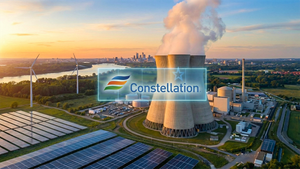
The foundational bedrock of modern electronics, advanced Integrated Circuit (IC) substrates, are no longer passive components but have evolved into strategic enablers, critically shaping the future of artificial intelligence (AI), high-performance computing (HPC), and next-generation communication. Poised for explosive growth between 2025 and 2032, this vital segment of the semiconductor industry is undergoing a profound transformation, driven by an insatiable demand for miniaturization, power efficiency, and unparalleled performance. The market, estimated at approximately USD 11.13 billion in 2024, is projected to reach as high as USD 61.28 billion by 2032, exhibiting a staggering Compound Annual Growth Rate (CAGR) of up to 15.69%. This expansion underscores the immediate significance of advanced IC substrates as the critical interface facilitating the complex chip designs and advanced packaging solutions that power the digital world.
The immediate significance of this market lies in its role as a "critical pillar" for breakthroughs in AI, 5G/6G, IoT, and autonomous driving. These substrates provide the essential electrical connections, mechanical support, and thermal management necessary for integrating diverse functionalities (chiplets) into a single, compact package. As the semiconductor industry pushes the boundaries of performance and miniaturization, advanced IC substrates are becoming the bottleneck and the key to unlocking the full potential of future technological advancements, ensuring signal integrity, efficient power delivery, and robust thermal dissipation.
Engineering Tomorrow's Chips: A Deep Dive into Technical Advancements
The evolution of advanced IC substrates is marked by continuous innovation across materials, manufacturing processes, bonding techniques, and design considerations, fundamentally departing from previous approaches. At the forefront of material science are advancements in both organic and glass core substrates. Organic substrates, leveraging materials like Ajinomoto Build-Up Film (ABF), continue to refine their capabilities, pushing for finer trace widths and higher integration levels. While traditional organic substrates were cost-effective, modern iterations are significantly improving properties, though still facing challenges in extreme thermal management.
However, the true game-changer emerging in the technical landscape is the Glass Core Substrate (GCS). Made typically from borosilicate glass, GCS offers superior mechanical stability, rigidity, and exceptional dielectric performance. Its ultra-low coefficient of thermal expansion (CTE) closely matches that of silicon, drastically reducing warpage—a critical issue in advanced packaging. Glass also enables significantly smaller via drill sizes (5μm to 15μm Through-Glass Vias or TGVs) compared to the 50μm of organic substrates, leading to unprecedented interconnect density. This allows for significantly higher-density interconnections, crucial for high-speed signal integrity and reduced warpage, particularly for AI accelerators and data centers.
Manufacturing processes have become increasingly sophisticated. The Semi-Additive Process (SAP) is now standard for creating ultra-fine line and space geometries, pushing dimensions below 5/5µm, and targeting 1.5µm for glass substrates. This precision, coupled with advanced laser drilling for microvias and TGVs, enables a density unachievable with traditional subtractive etching. Bonding techniques have also evolved beyond wire bonding to Flip-Chip Bonding, which uses solder bumps for higher I/O density and improved thermal management. The cutting edge is Hybrid Bonding, a direct connection method achieving pitches as small as 10µm and below, dramatically improving interconnect density for 3D-like packages. These advancements are crucial for handling the increasing layer counts (projected to reach 20-28 layers by 2026) and larger substrate sizes (up to 150x150mm by 2026) demanded by next-generation semiconductors.
The semiconductor research community and industry experts have greeted these advancements with considerable enthusiasm, recognizing the market's robust growth driven by AI and HPC. GCS is particularly viewed as a transformative material, with companies like (NASDAQ: INTC) Intel actively pioneering its development. While challenges like the brittleness of glass and complex interface stresses remain, the industry is making significant strategic investments to overcome these hurdles, anticipating the complementary roles of both organic and glass solutions in the evolving semiconductor landscape.
Corporate Chessboard: How Substrates Reshape the Tech Landscape
The advancements in advanced IC substrates are not merely technical improvements; they are strategic imperatives reshaping the competitive landscape for AI companies, tech giants, and innovative startups. The ability to leverage these substrates directly translates into superior performance, power efficiency, and miniaturization—critical differentiators in today's fiercely competitive market.
Companies like (NASDAQ: INTC) Intel, (NASDAQ: AMD) AMD, and (NASDAQ: NVDA) NVIDIA, all titans in AI and high-performance computing, stand to benefit immensely. Intel, for instance, is making significant investments in glass substrates, aiming to deploy them in commercial products by 2030 to achieve up to 1 trillion transistors on a package. This innovation is crucial for pushing the boundaries of Moore's Law and directly benefiting demanding AI workloads. AMD and NVIDIA, as leading developers of GPUs and AI accelerators, are major consumers of advanced substrates, particularly Flip Chip Ball Grid Array (FC-BGA), which are vital for their complex 2.5D/3D advanced packages. (KRX: 005930) Samsung, through its Electro-Mechanics division, is also aggressively pursuing glass substrates, targeting mass production after 2027 to enhance power efficiency and adaptability. (TPE: 2330) TSMC, the world's largest independent foundry, plays a pivotal role with its advanced packaging technologies like 3DFabric and CoWoS, which are intrinsically linked to advanced IC substrates.
The competitive implications are profound. Tech giants are increasingly pursuing vertical integration, designing custom silicon optimized for specific AI workloads, which relies heavily on advanced packaging and substrate technologies. This allows them to differentiate their offerings and enhance supply chain resilience. Foundries are in a "silicon arms race," competing to offer cutting-edge process nodes and advanced packaging solutions. This environment fosters strategic alliances, such as Samsung Electro-Mechanics' collaboration with (NYSE: AMKR) Amkor Technology, and TSMC's partnerships with various advanced packaging companies. Startups also find opportunities, with expanded manufacturing capacity potentially democratizing access to advanced chips, though the high investment barrier remains a challenge. Niche innovators, like Substrate, are exploring novel approaches to chip production to reduce costs and challenge established players.
Potential disruptions include the accelerated obsolescence of general-purpose CPUs for complex AI, as specialized AI chips enabled by advanced substrates becomes more efficient. The anticipated shift from traditional organic substrates to glass, once mass production is viable, represents a significant material paradigm change. Moreover, the rise of Edge AI, driven by specialized chips and advanced substrates, will reduce reliance on cloud infrastructure for real-time applications, transforming consumer electronics and IoT devices. Companies can secure strategic advantages by investing in R&D for novel materials like glass-core substrates, mastering advanced packaging techniques, expanding manufacturing capacity, fostering strategic partnerships, and targeting high-growth applications like AI and HPC.
The Broader Tapestry: Substrates in the AI Epoch
The advancements in IC substrates transcend mere component improvements; they represent a fundamental paradigm shift within the broader AI and semiconductor landscape. As the industry grapples with the physical limits of Moore's Law, advanced packaging, enabled by these sophisticated substrates, has emerged as the linchpin for continued performance scaling. This "More than Moore" approach focuses on integrating more components and functionalities within a single package, rather than solely shrinking individual transistors.
This shift is profoundly impacting chip design and manufacturing paradigms, most notably through heterogeneous integration and chiplet architectures. Heterogeneous integration, which combines multiple chips with diverse functionalities into a single package, relies on advanced substrates as the high-performance interconnect platform. This enables seamless communication between components, optimizing performance and efficiency. Chiplets, smaller, specialized dies integrated into a single package, are becoming crucial for overcoming the economic and physical limitations of monolithic chip designs. Advanced IC substrates are the foundational element allowing designers to mount more chiplets in a smaller footprint, leading to enhanced performance, greater flexibility, and lower power consumption. This disaggregation of System-on-Chip (SoC) designs is a significant change, improving overall yield and reducing costs for advanced nodes.
Despite the immense benefits, several potential concerns loom. Supply chain resilience remains a major challenge, with advanced IC substrate manufacturing highly concentrated in a few Asian countries. This geographical concentration has spurred governmental initiatives, such as the US CHIPS Act, to diversify manufacturing capabilities. The cost of producing these advanced substrates is also significant, involving expensive R&D, prototyping, and stringent quality control. While heterogeneous integration can offer cost advantages, the substrates themselves represent a substantial capital expenditure. Furthermore, the environmental impact of resource-intensive semiconductor manufacturing is a growing concern, driving research into eco-friendly materials and processes. Technical hurdles like managing warpage for increasingly large and thin substrates, addressing the brittleness of new materials like glass, and achieving ultra-fine line/space dimensions continue to demand intensive R&D.
Comparing these advancements to previous semiconductor milestones, the current evolution of IC substrates and advanced packaging is analogous to the foundational shifts brought by Moore's Law itself. It marks a transition from a monolithic to a modular approach to chip design, allowing for greater flexibility and the integration of specialized functions. The emergence of glass core substrates is particularly revolutionary, akin to the introduction of new materials that fundamentally altered previous generations of semiconductors. This strategic shift is not just an incremental improvement but a redefinition of how performance gains are achieved in the post-Moore era.
The Horizon: Charting Future Developments (2025-2032)
The advanced IC substrate market is set for a dynamic future, with both near-term refinements and long-term revolutionary changes on the horizon between 2025 and 2032. In the near-term (2025-2027), organic core substrates will continue to dominate, with ongoing advancements in manufacturing processes to achieve finer line/space dimensions (below 5/5µm) and increased layer counts (20-28 layers). Substrate-Like PCBs (SLP) will further penetrate mobile and consumer electronics, while Flip-Chip Ball Grid Array (FCBGA) remains critical for 5G base stations, HPC, and AI. This period will also see intensified competition and significant strategic investments in pilot lines and R&D for Glass Core Substrates (GCS). Companies like (KRX: 005930) Samsung Electro-Mechanics and LG Innotek are targeting prototypes, with (NASDAQ: INTC) Intel and Absolics leading the charge in validating GCS for ultra-high-density applications. Capacity expansion, particularly in Asia and supported by initiatives like the US CHIPS Act, will be a defining feature.
The long-term outlook (2028-2032) promises the widespread commercialization of GCS, transitioning from pilot programs to volume production. GCS is projected to capture 20-30% of the advanced packaging market by 2036, potentially displacing conventional organic substrates and challenging silicon interposers. Its superior dimensional stability, ultra-low CTE, and ability to achieve 6µm diameter Through-Glass Vias (TGVs) will be crucial for next-generation products, initially in HPC and AI. Substrate dimensions will continue to grow, accommodating larger and more complex chips, with layer counts increasing significantly beyond 28. Continuous innovation in materials (low-Dk/Df, high-temperature resistant) and processes will support ultra-fine interconnects and embedded components.
These advancements are foundational for a myriad of cutting-edge applications. AI and HPC will remain primary drivers, with substrates supporting AI accelerators, data centers, and machine learning, demanding high bandwidth and power efficiency. 5G/6G technology, autonomous driving (ADAS), and electric vehicles (EVs) will also heavily rely on advanced substrates for signal integrity, thermal stability, and miniaturization. The pervasive trend of heterogeneous integration and chiplets will see advanced substrates serving as the critical platform for combining diverse chips into single, powerful packages.
However, significant challenges persist. Warpage, caused by CTE mismatches, remains a major hurdle, though GCS offers a promising solution. The brittleness of glass core substrates presents new handling and manufacturing complexities. Cost is another factor, with advanced substrates involving expensive R&D and manufacturing, though aggressive roadmaps project significant cost reductions for GCS by 2030. Effective thermal management and maintaining signal integrity at higher frequencies are ongoing technical challenges. Experts predict GCS will be a transformative technology, enabling unprecedented integration and performance for AI and HPC. The consensus is a future of continued miniaturization, integration, and an increasing emphasis on heterogeneous integration, driven by collaborative innovation across the semiconductor supply chain.
The Unseen Architect: A New Era for AI and Beyond
The advanced IC substrates market, often operating behind the scenes, has unequivocally emerged as a central protagonist in the ongoing narrative of technological progress. It is the unseen architect, meticulously crafting the intricate foundations upon which the future of artificial intelligence, high-performance computing, and a hyper-connected world will be built. The robust growth projections, signaling a multi-billion dollar market by 2032, underscore not just an expansion in volume, but a fundamental re-evaluation of the substrate's strategic importance within the semiconductor ecosystem.
This development marks a pivotal moment in semiconductor history, akin to previous milestones that reshaped the industry. As Moore's Law confronts its physical limitations, advanced IC substrates, by enabling sophisticated multi-chip packaging and heterogeneous integration, provide the critical pathway to continue performance scaling. This "More than Moore" era is defined by the ability to integrate diverse functionalities into a single package, and the substrate is the indispensable platform making this possible. Without these advancements, the ambitious performance targets of AI accelerators, data centers, and advanced mobile processors would remain unattainable.
Looking ahead, the long-term impact of advanced IC substrates will be nothing short of revolutionary. They will continue to be the unsung heroes enabling the next wave of technological innovation across virtually every electronic domain, dictating the art of the possible in terms of device miniaturization, power efficiency, and overall performance. The decisive move towards novel materials and architectural shifts, particularly the widespread adoption and commercialization of glass core substrates (GCS) and the further integration of embedded die (ED) technologies, will fundamentally reshape semiconductor packaging capabilities.
What to watch for in the coming weeks and months will be crucial indicators of this trajectory. Keep a close watch on new product announcements from leading manufacturers like Absolics, (NASDAQ: INTC) Intel, (KRX: 005930) Samsung, Unimicron, and Ibiden, particularly those focusing on advanced packaging, glass core, or embedded die technologies. R&D breakthroughs in achieving ultra-fine line/space dimensions, perfecting warpage control for larger substrates, and developing next-generation materials will be highlighted at industry conferences and through corporate disclosures. The commercialization timeline for glass core substrates, spearheaded by Absolics, Intel, and Samsung, remains a significant focal point. Finally, monitor shifts in market share between different substrate types and the impact of trade policies on global sourcing strategies, as these will shape the market in the immediate future. The advanced IC substrate market is a vibrant ecosystem where innovation is a constant, promising further breakthroughs that will redefine the capabilities of semiconductor technology itself.
This content is intended for informational purposes only and represents analysis of current AI developments.
TokenRing AI delivers enterprise-grade solutions for multi-agent AI workflow orchestration, AI-powered development tools, and seamless remote collaboration platforms.
For more information, visit https://www.tokenring.ai/.






